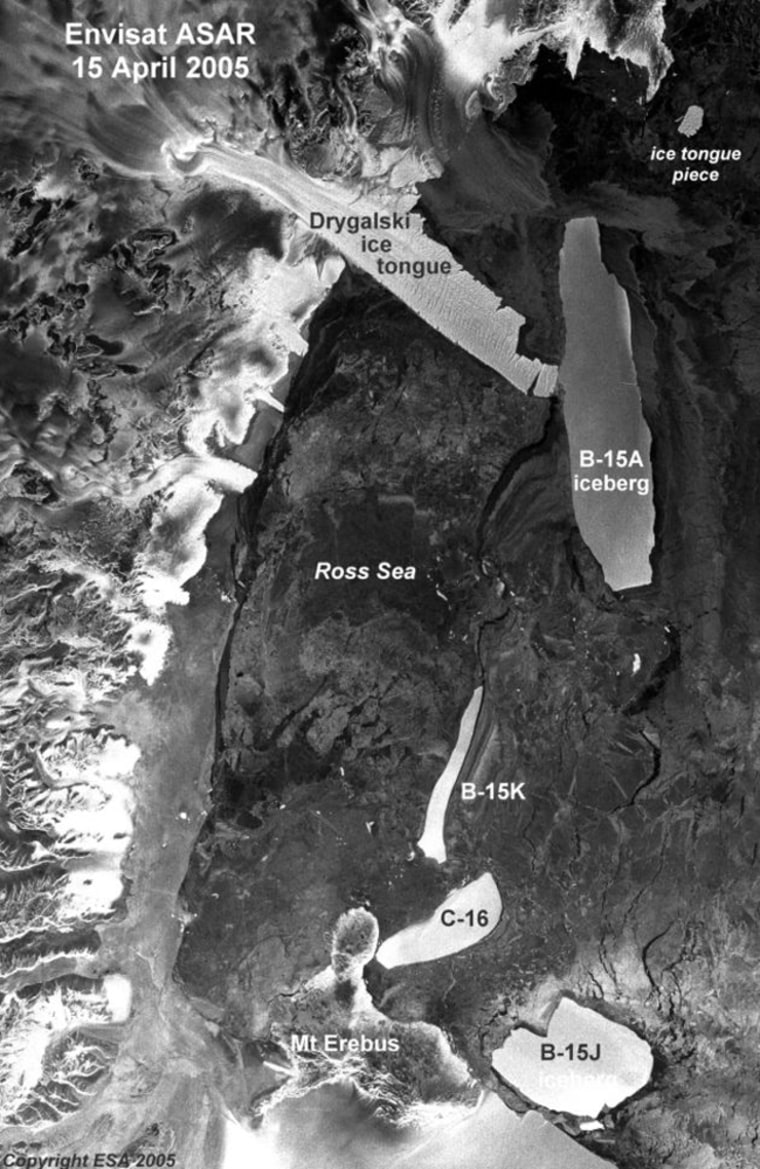An iceberg that collided with Antarctica has broken a piece of the continent off, forcing maps of the bottom of the world to be redrawn, European scientists said today.
The iceberg, named B-15A, is whopping 71 miles (115 kilometers) long. Scientists predicted an imminent collision back in January. Instead, the iceberg ran aground and stalled out. Then it broke free last month.
Now it has finally collided with the continent's Drygalski ice tongue and smacked a city sized chunk of it into the ocean.
The frigid carnage is visible in a new satellite image from the European Space Agency (ESA). The picture was taken April 15 and released today.
The Drygalski ice tongue sticks out into the McMurdo Sound on the Ross Sea and figures into maps of the region. The tongue is about 44 miles (70 kilometers) long. Or at least it was.
The broken-off piece is about 3 miles (5 kilometers) long.
B-15A is the largest chunk left of a bigger iceberg, known as B-15, that broke off the Ross Ice Shelf in March 2000. That initial frozen hunk was about the size of Jamaica. After B-15 broke apart, the chunk named B-15A drifted into McMurdo Sound, where it blocked ocean currents and caused other sea ice to build up, threatening wildlife.
More collisions between the iceberg and Drygalski are possible, the scientists said.
